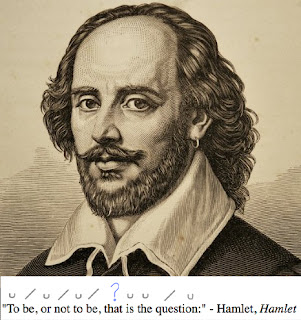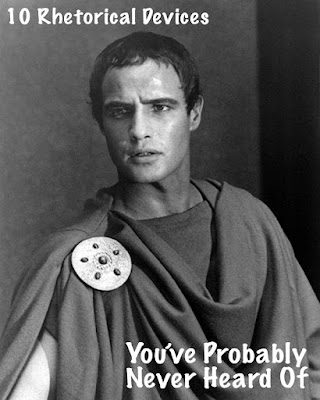Categorizing Shakespeare's Plays: Comedy, Tragedy, History, Romance, Problem Play
It is commonly thought that Shakespeare wrote three types of plays: the comedies, the tragedies, and the histories. The broad definitions of each of those categories can be found below. But scholars who used these three categories exclusively soon ran into a problem––what do you do with the plays that don't fit into any of the existing three categories?
A Shakespearean comedy is a play written in a light-hearted tone and style, which ends with marriage between the unmarried characters.
A Shakespearean tragedy is a play written in a dark tone and style, in which the protagonist experiences a moral and/or physical demise that leads to his or her ruin by the end of the play. Generally, this style includes the death of at least one of the main characters.
A Shakespearean history is a play that acts as a biography of the English kings of the 400 years preceding his lifetime.
A Shakespearean romance, also called a late romance or tragicomedy (the name of which encompasses a mixture of comedy and tragedy), is one of Shakespeare's final plays that contains at least one of the following elements: (1) tragic or potentially tragic elements at the beginning of the play which are resolved by the end; (2) separated family members; (3) magic and fantastical elements; (4) a mixture of courtly/royal and pastoral/country scenes and characters. This category includes five plays: Pericles, Prince of Tyre, Cymbeline, The Winter's Tale, The Tempest, The Two Noble Kinsmen. These five plays are often divided up into comedies and tragedies.
A Shakespearean comedy is a play written in a light-hearted tone and style, which ends with marriage between the unmarried characters.
A Shakespearean tragedy is a play written in a dark tone and style, in which the protagonist experiences a moral and/or physical demise that leads to his or her ruin by the end of the play. Generally, this style includes the death of at least one of the main characters.
Note: The Roman plays (Julius Caesar, Antony and Cleopatra, and Coriolanus), although they are based on the stories historical figures, exist as a subcategory of the tragedies because their stories did not originate from England.
A Shakespearean history is a play that acts as a biography of the English kings of the 400 years preceding his lifetime.
A Shakespearean romance, also called a late romance or tragicomedy (the name of which encompasses a mixture of comedy and tragedy), is one of Shakespeare's final plays that contains at least one of the following elements: (1) tragic or potentially tragic elements at the beginning of the play which are resolved by the end; (2) separated family members; (3) magic and fantastical elements; (4) a mixture of courtly/royal and pastoral/country scenes and characters. This category includes five plays: Pericles, Prince of Tyre, Cymbeline, The Winter's Tale, The Tempest, The Two Noble Kinsmen. These five plays are often divided up into comedies and tragedies.
In his 1896 book Shakespeare and his predecessors, English scholar F. S. Boas first coined the term "problem play" to refer to the plays that qualify neither as comedies, nor as tragedies, nor as histories. His definition referred only to three plays: All's Well That Ends Well, Measure for Measure, Troilus and Cressida. In the modern day, the term can also require that a play foreground a social phenomenon or issue, using the society created by the play and its characters to provide context, examples, consequences, and perhaps even solutions to those issues.
Below is a table of the most common and universal categorization of Shakespeare's plays.
KEY:
Blue = Roman play
Purple = romance
Asterisk (*) after name of play = plays which can be considered problem plays
| Comedies | Tragedies | Histories |
| All's Well That Ends Well* | Antony and Cleopatra* | Edward III |
| As You Like It | Coriolanus | Henry IV, part 1 |
| The Comedy of Errors | Hamlet* | Henry IV, part 2 |
| Cymbeline* | Julius Caesar | Henry V |
| Love's Labours Lost | King Lear | Henry VI, part 1 |
| Measure for Measure* | Macbeth | Henry VI, part 2 |
| The Merry Wives of Windsor | Othello | Henry VI, part 3 |
| The Merchant of Venice* | Romeo and Juliet | Henry VIII |
| A Midsummer Night's Dream | Timon of Athens* | King John |
| Much Ado About Nothing | Titus Andronicus | Richard II |
| Pericles, Prince of Tyre | Richard III | |
| The Taming of the Shrew* | ||
| The Tempest* | ||
| Troilus and Cressida* | ||
| Twelfth Night | ||
| Two Gentlemen of Verona | ||
| The Winter's Tale* | ||
| The Two Noble Kinsmen |




What about The Comedy of Errors and Edward III?
ReplyDeleteThank you so much for bringing this to our attention; we have updated the post accordingly!
Delete